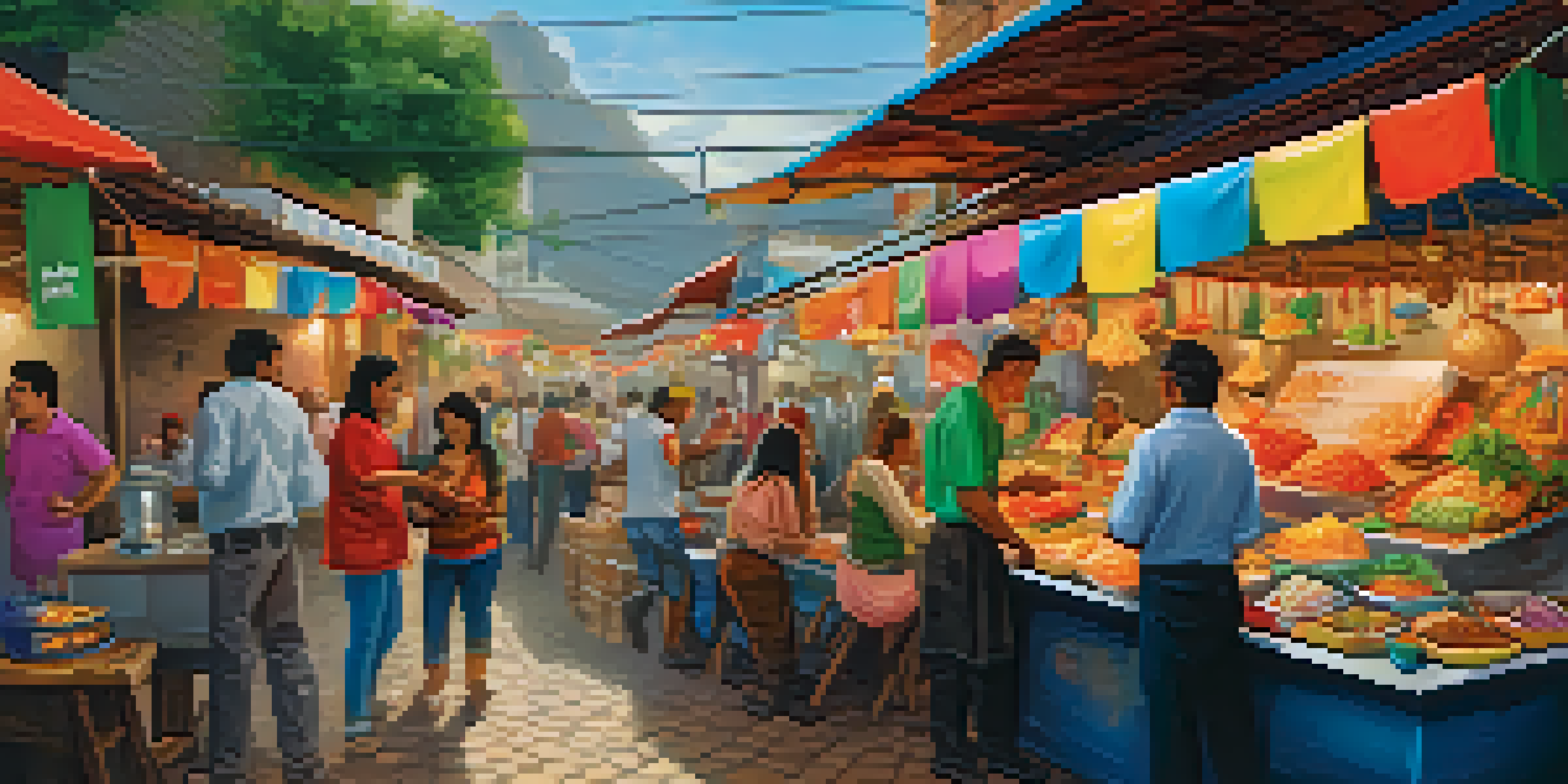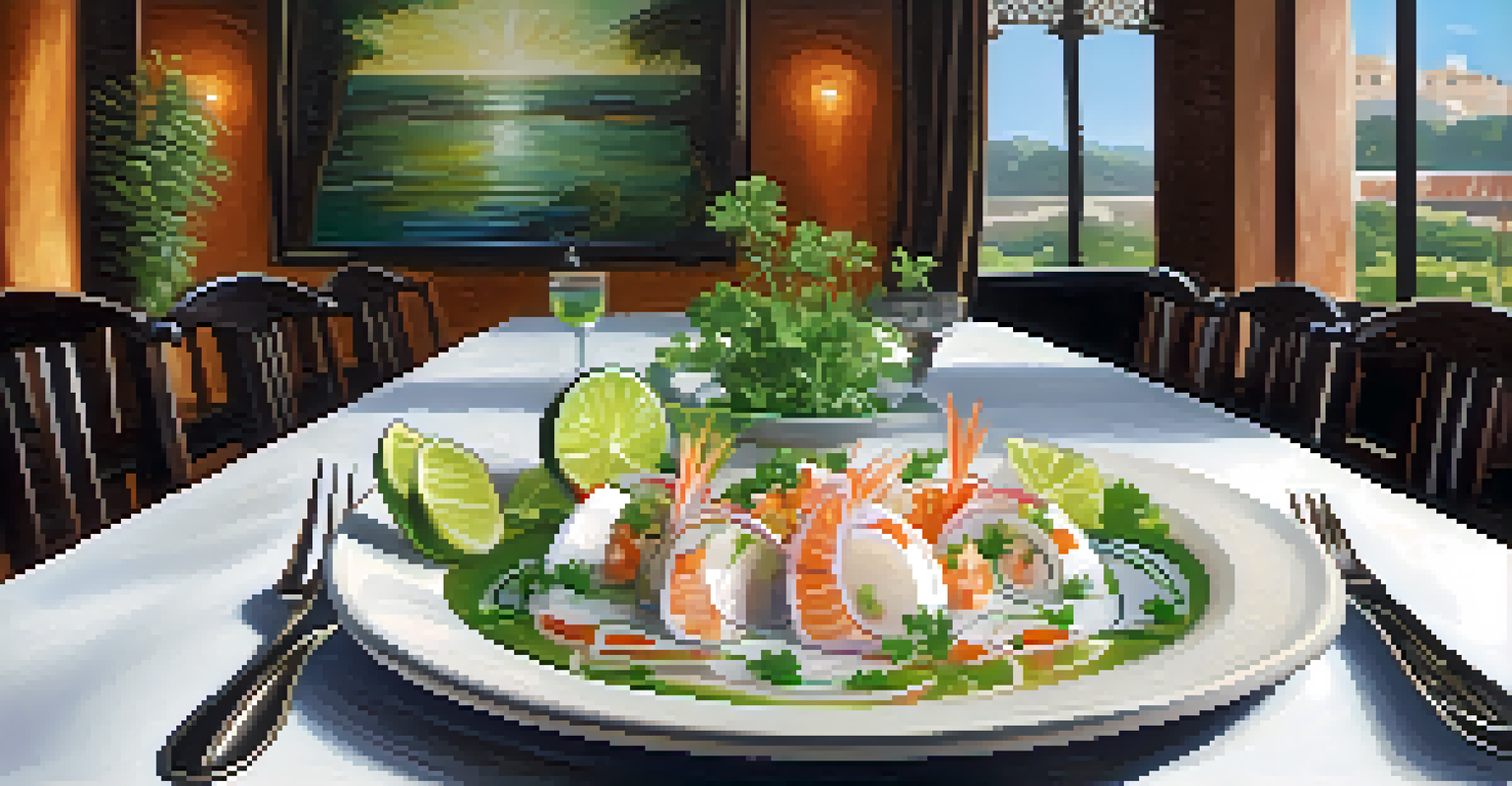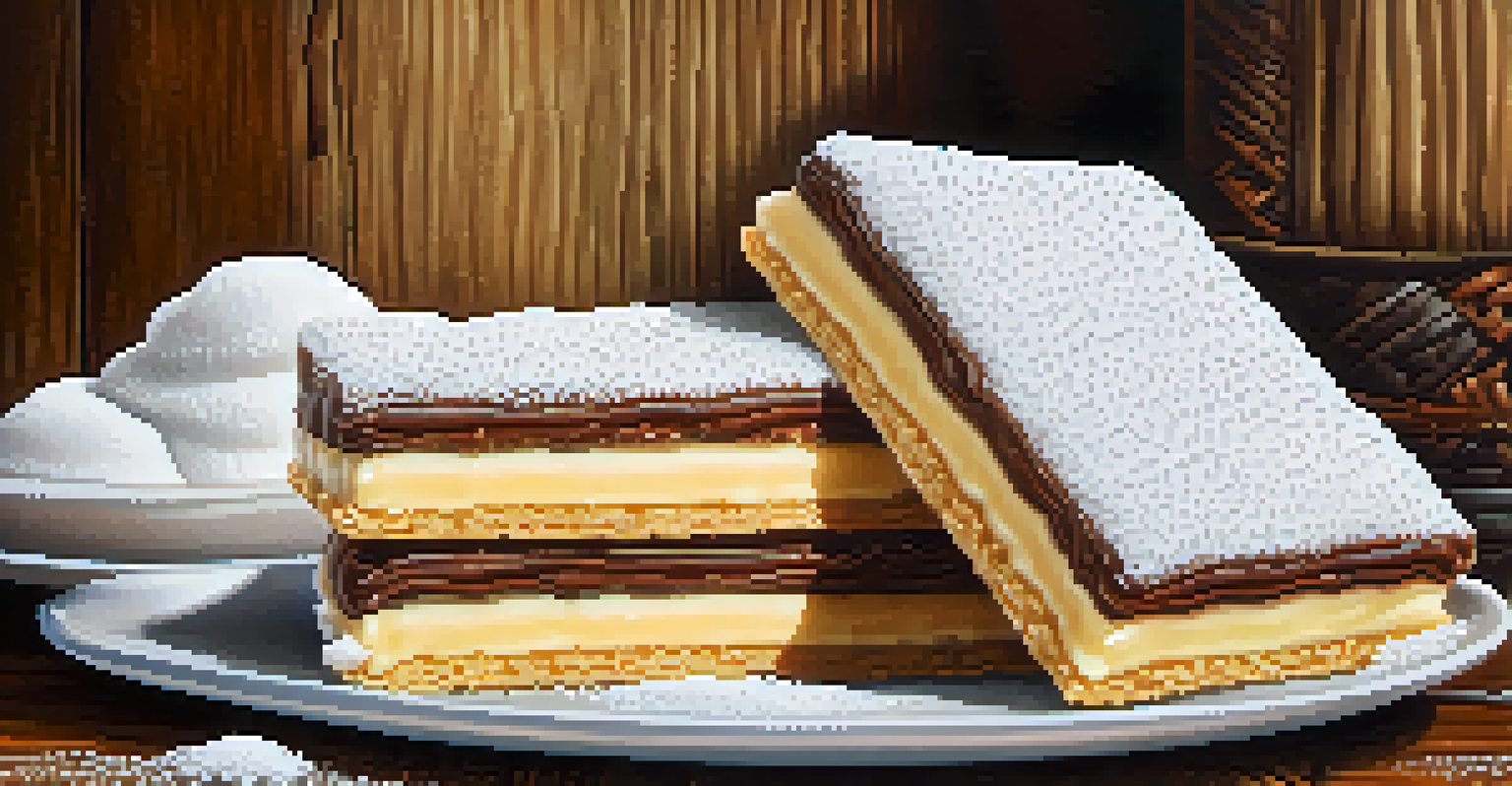Peru's Culinary Fusion: From Street Food to Fine Dining

The Rich Tapestry of Peruvian Cuisine
Peru's culinary scene is a vibrant tapestry woven from its diverse cultures and traditions. With influences from Indigenous, Spanish, African, and Asian cuisines, each dish tells a story of the country's history. This fusion has created a unique gastronomic landscape that appeals to both locals and visitors alike.
Food is our common ground, a universal experience.
One of the most fascinating aspects of Peruvian cuisine is its regional diversity. From the coastal cities to the Andes and the Amazon, each area boasts its own specialties, reflecting the local ingredients and traditions. For example, Lima is often hailed as the gastronomic capital of the country, offering a plethora of innovative dishes that highlight fresh seafood.
As you explore Peru's culinary offerings, you'll notice how traditional ingredients like potatoes, corn, and quinoa are transformed into modern culinary masterpieces. This blend of old and new creates a dynamic food culture that keeps evolving, making it an exciting destination for food lovers.
Street Food: The Heart of Peruvian Dining
When it comes to experiencing authentic Peruvian cuisine, street food is where the adventure begins. From bustling markets to street vendors, you'll find an array of mouthwatering options that are both affordable and delicious. Dishes like ceviche, anticuchos (grilled skewered meat), and empanadas are just a few highlights that draw crowds.

What makes street food so special is the way it brings people together. It's common to see families and friends gathering around food stalls, sharing laughter and stories while enjoying their meals. This sense of community is at the heart of Peru's culinary culture, making every bite more meaningful.
Peruvian Cuisine: A Cultural Fusion
Peruvian cuisine is a vibrant blend of Indigenous, Spanish, African, and Asian influences, creating a unique gastronomic landscape.
Moreover, street food in Peru is often made with fresh, local ingredients, showcasing the country's agricultural bounty. As you savor these flavors, you're not just tasting food; you're experiencing the essence of Peru and its people.
The Rise of Fine Dining in Peru
While street food holds a special place in Peruvian hearts, the fine dining scene is flourishing as well. World-renowned chefs are pushing boundaries and elevating traditional dishes to new heights. This has led to a surge in innovative restaurants that blend local ingredients with global culinary techniques.
Cooking is like love. It should be entered into with abandon or not at all.
Establishments like Central, Maido, and Astrid y Gastón have gained international acclaim for their creativity and commitment to showcasing Peru's rich biodiversity. These restaurants often present tasting menus that take diners on a journey through the country's landscapes, highlighting flavors from the sea to the mountains.
Fine dining in Peru is not just about the food; it's also about the experience. Many restaurants focus on creating an ambiance that reflects the culture and artistry of the region, making each meal a feast for the senses.
Ceviche: Peru's Signature Dish
Ceviche is perhaps the most iconic dish representing Peru's culinary identity. This refreshing seafood dish consists of raw fish marinated in citrus juices, typically lime, and is often accompanied by onions, cilantro, and chili peppers. Its origins date back centuries and have evolved into countless variations across the country.
What sets Peruvian ceviche apart is the quality of the fish and the meticulous preparation. Chefs often source their seafood directly from local fishermen, ensuring freshness and sustainability. The balance of flavors in ceviche, combining acidity, spice, and saltiness, creates an unforgettable taste experience.
Street Food: Community and Flavor
Street food in Peru offers affordable, delicious options that foster a sense of community and showcase local ingredients.
Whether enjoyed at a high-end restaurant or from a street vendor, ceviche is a must-try for anyone visiting Peru. It's more than just a dish; it embodies the spirit of Peruvian cuisine and the country's connection to the ocean.
Fusion Flavors: The Asian Influence
One of the most fascinating aspects of Peruvian cuisine is the significant influence of Asian flavors, particularly from Japan and China. This fusion began in the late 19th and early 20th centuries when immigrants brought their culinary traditions to Peru. Dishes like Nikkei (a blend of Peruvian and Japanese cuisine) and Chifa (Peruvian-Chinese cuisine) exemplify this cultural exchange.
Nikkei cuisine beautifully marries the techniques of Japanese cooking with Peruvian ingredients. For example, you might find sushi rolls filled with avocado and aji amarillo, a popular Peruvian chili pepper. This unique combination results in dishes that are both familiar and refreshingly new.
Similarly, Chifa offers a variety of stir-fried dishes and dumplings, showcasing how flavors can transcend borders. These fusion cuisines have become integral to Peru's culinary landscape, attracting food enthusiasts eager to explore this harmonious blend.
Sweet Treats: Desserts in Peruvian Cuisine
Peruvian desserts are often overlooked but are a delightful surprise for those willing to indulge. Influenced by both indigenous and European traditions, desserts like tres leches cake, alfajores, and picarones (sweet potato doughnuts) showcase the country's rich flavors and textures. Each bite offers a glimpse into Peru's sweet side.
One standout dessert is the famous alfajores, which are soft cookies filled with dulce de leche and dusted with powdered sugar. These treats are commonly enjoyed with tea or coffee, making them a popular choice for afternoon snacks. Their melt-in-your-mouth quality makes them irresistible.
Fine Dining: Elevating Tradition
The fine dining scene in Peru is thriving as chefs innovate traditional dishes, offering immersive culinary experiences.
In addition to traditional sweets, modern pastry chefs in Peru are experimenting with new flavors and techniques, elevating desserts to an art form. This blend of tradition and innovation ensures that there's always something new to discover in the world of Peruvian sweets.
Sustainability in Peruvian Culinary Practices
As the world becomes more conscious of sustainability, Peru's culinary scene is leading the way with eco-friendly practices. Many chefs and restaurants are prioritizing local sourcing, reducing food waste, and incorporating sustainable seafood into their menus. This commitment not only supports local communities but also helps protect the environment.
A growing number of initiatives focus on promoting biodiversity and preserving traditional farming methods. For instance, chefs are collaborating with local farmers to cultivate native crops, ensuring that future generations can enjoy Peru's rich agricultural heritage. This emphasis on sustainability reflects a deep respect for the land and its resources.

By choosing to dine at establishments that prioritize sustainability, visitors can enjoy delicious meals while contributing to the preservation of Peru's culinary culture. It's a win-win for both the palate and the planet.